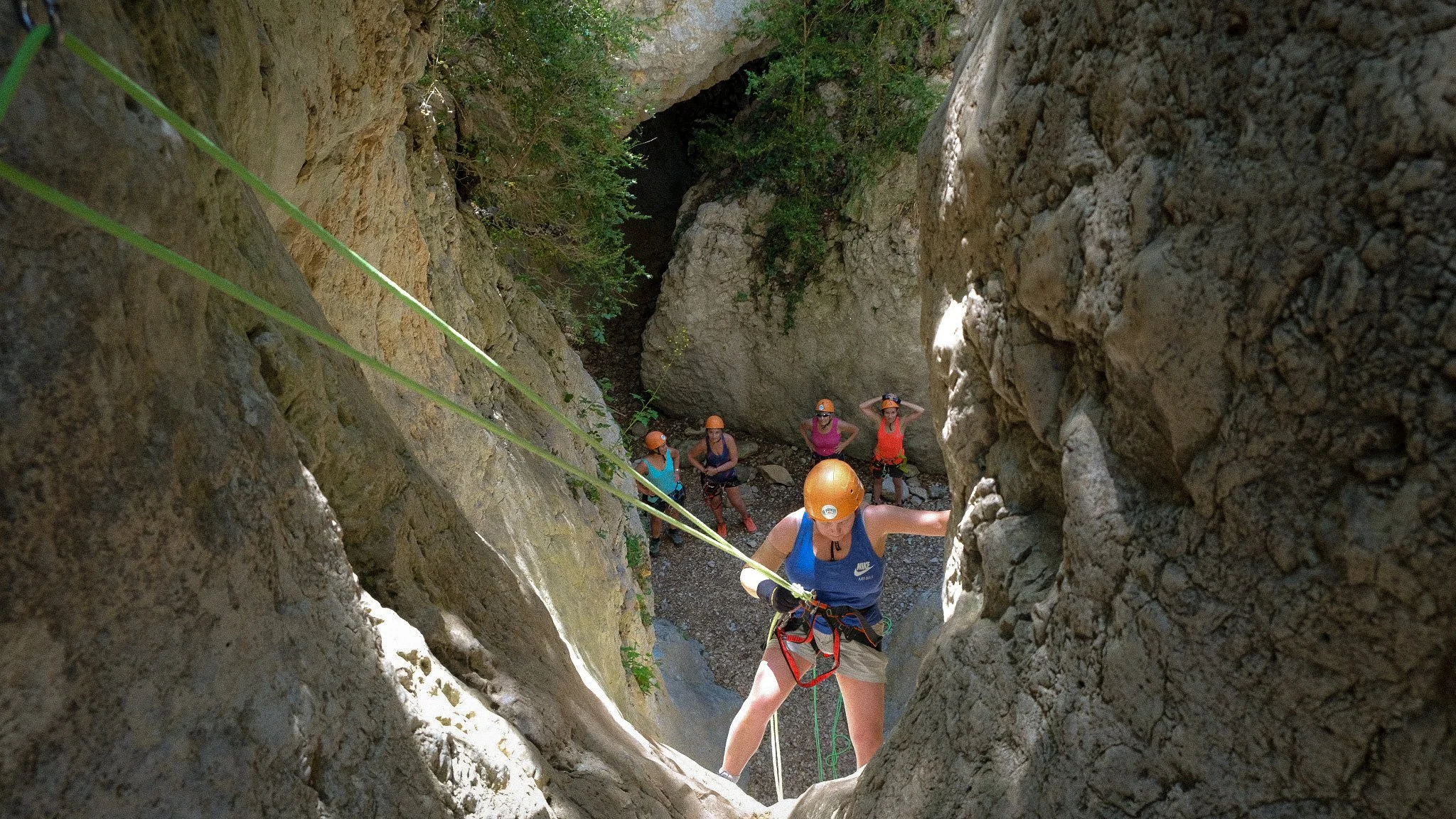Sierra de Guara is Sierra de Guara is a mountain range in northern Spain, located in the region of Aragón, just northeast of the city of Huesca. It forms part of the Pre-Pyrenees and is especially known for its dramatic landscapes, deep canyons, crystal-clear rivers, limestone cliffs, and peaceful villages.
What it’s like in the summer
Warm and Sunny Days
Summer in Sierra de Guara is usually warm and dry, with lots of sunshine. Temperatures during the day can range from 25°C to 35°C (77°F to 95°F), though it cools down nicely at night, especially in higher areas.
Great for Outdoor Activities
It’s a paradise for nature lovers and adventurers. Summer is the best time for:
Canyoning – sliding, swimming, and jumping into turquoise pools through narrow river gorges (very popular here).
Hiking – plenty of trails across wild, rocky landscapes and through ancient paths between villages.
Rock Climbing – the limestone cliffs attract climbers from all over the world.
Swimming – in natural river pools, which feel amazing on a hot day.
Sierra de Guara is a mountain range in northern Spain, located in the region of Aragón, just northeast of the city of Huesca. It forms part of the Pre-Pyrenees and is especially known for its dramatic landscapes, deep canyons, crystal-clear rivers, limestone cliffs, and peaceful villages.
This majestic place has become our summer playground.
Layer upon layer of memories have been woven into its landscape over the years, which is why every summer, Sierra de Guara becomes an essential part of our lives.
We don’t know when—or if—we’ll ever stop returning to this paradise.
Walking along the cliff’s edge, you can’t help but pause in awe—humbled by the raw, untamed beauty of nature.
The sun beats down, relentless and fierce, but just below, an oasis shimmers in the distance, promising shade, cool water, and quiet renewal.
While hiking, you often cross paths with rock climbers immersed in their own vertical world.
Gazing up at a towering cliff, you spot them—suspended mid-air, defying gravity.
You can’t help but watch in awe, admiring their focus, strength, and the quiet courage it takes to climb so high.
Rappelling is a must to truly discover the hidden side of Sierra de Guara.
Lowering ourselves into canyons and secret ravines, we uncover a wilder, more intimate beauty.
We take turns patiently, knowing that each person’s descent is a shared triumph.
Here, the success of one becomes the success of us all.
Walking through the canyons of Sierra de Guara is more than a physical journey—it’s an immersion into a world carved by time and silence. Towering walls rise on either side, shaped by centuries of wind and water, enclosing us in a cathedral of stone. Each step along the gorge reveals something ancient and raw: polished rock worn smooth by flowing water, narrow passages that demand attention and respect, sudden bursts of sunlight breaking through after moments in shadow. You feel small here—but not insignificant. You feel part of something much older.
This landscape invites you to slow down and observe. You begin to notice the delicate ferns clinging to shaded crevices, the way the light dances on the water’s surface, the sound of your footsteps echoing off the walls. There’s a rhythm to the land, and by walking through it, you begin to tune in. The gorge narrows and widens, rises and dips, and with each turn, the land reveals another secret—an emerald pool, a hidden waterfall, a sculpted boulder standing like a sentinel.
Then comes the joy of wading—of stepping barefoot into cool, clear water that runs through the canyon like a living thread. With every splash, laughter echoes between the cliffs. We become children again, slipping between rocks, floating in quiet pools, letting the river carry our thoughts away. It’s in these moments that we don’t just admire the land—we play with it, feel its pulse, and remember what it means to be free.
By moving through these gorges on foot and through water, we don’t just see the land—we feel it. The heat of the rock, the refreshing plunge of a canyon pool, the tension in our legs as we descend or climb—all of it connects us more deeply to this place. We come to appreciate not only the dramatic beauty but the resilience and generosity of the terrain. It demands something of us, and in return, offers a sense of wonder and joy that lingers long after the trail ends.







